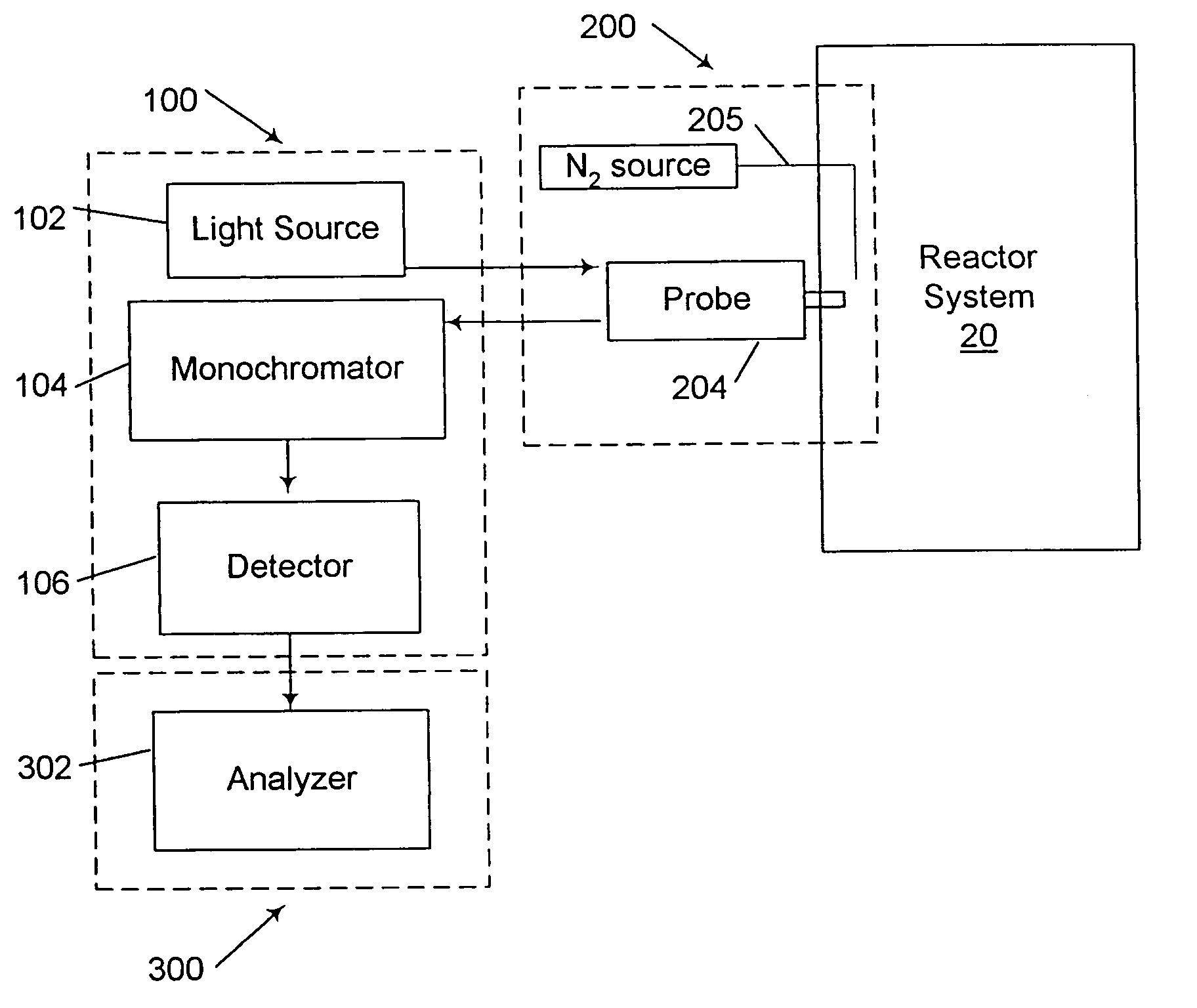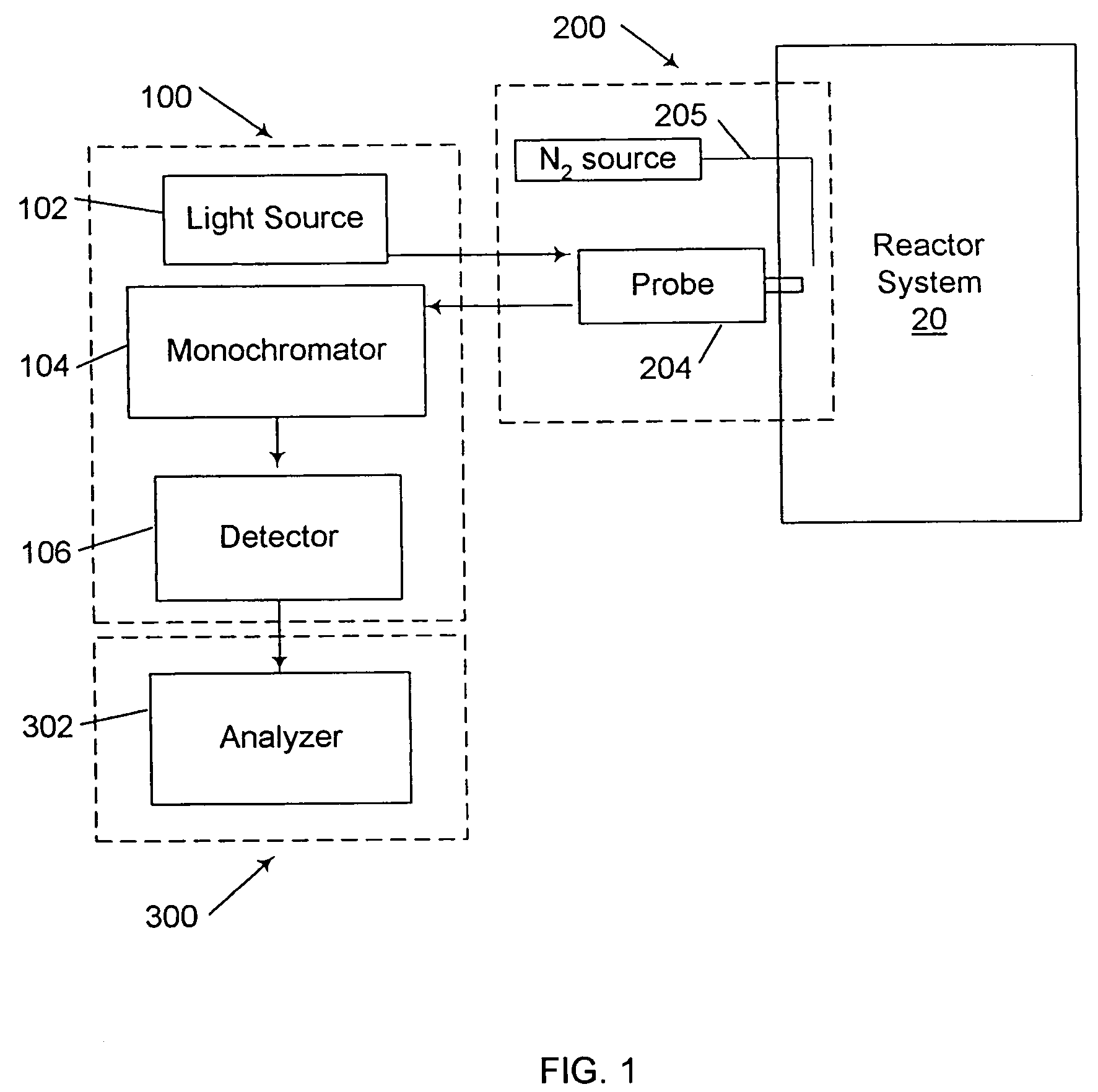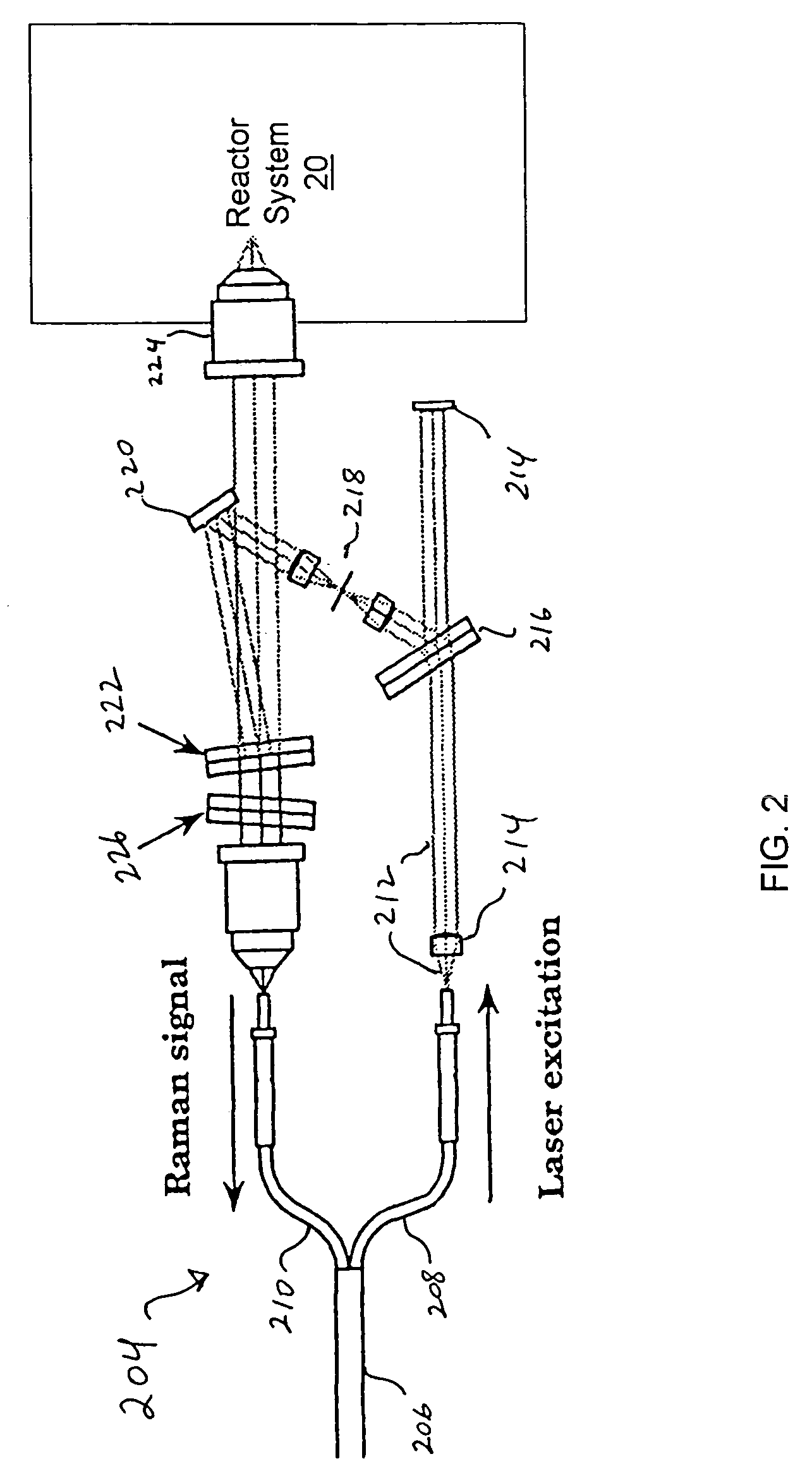On-line measurement and control of polymer product properties by Raman spectroscopy
a technology of raman spectroscopy and measurement and control, applied in the direction of optical radiation measurement, instruments, spectrometry/spectrophotometry/monochromators, etc., can solve the problems of inconvenient sampling, testing and adjustment, and the slowness of periodic sampling
- Summary
- Abstract
- Description
- Claims
- Application Information
AI Technical Summary
Problems solved by technology
Method used
Image
Examples
examples 1 – 2
Examples 1–2
[0088]Examples 1–2 were used to show the feasibility of embodiments of the invention. In Examples 1–2, measurements were made in the laboratory, simulating the measurements that would be made on-line in a polymerization reactor.
[0089]The Raman system used for Examples 1–2 was a Kaiser Optical Holoprobe Process Raman Analyzer, available from Kaiser Optical Systems, Inc., Ann Arbor, Mich. The Raman system used a 125 mW diode laser operating at 785 nm, and was equipped with a probe with 2.5 (6.3 cm) inch imaging optics fiber-optically coupled to the instrument, a holographic notch filter, holographic dispersion grating, cooled CCD detector (−40° C.), and computer for analyzer control and data analysis. A more complete description of this commercial instrument can be found in “Electro-Optic, Integrated Optic, and Electronic Technologies for Online Chemical Process Monitoring,”Proceedings SPIE, vol. 3537, pp. 200–212 (1998), the disclosure of which is incorporated herein by r...
example 1
Melt Index
[0093]Eighty-five polymer samples were used. Each sample was an HDPE resin, in a melt index range of from about 0.35 to about 0.65 g / 10 min, and a density range of about 0.952 to 0.963 g / cm3. Raman spectra and laboratory melt index measurements were collected as described above.
[0094]The lab values of melt index and the corresponding Raman spectra were used to create a locally-weighted regression model for melt index, using principal component loadings and principal component scores. The measured values of melt index (i.e., values obtained according to ASTM D-1238, condition 190° C., 2.16 kg), predicted values of melt index obtained from the model, and deviation (predicted minus measured, denoted “Δ MI”) are shown in Table 1. The results are also shown graphically in FIG. 3. The line in the Figure is the model prediction. The calculated R2 value was 0.994, with a standard error of 0.01 g / 10 min.
[0095]
TABLE 1Melt Index CalibrationMI (Lab)MI (Model)Δ MI(dg / min)(dg / min)(dg / mi...
example 2
Density
[0096]An analysis was carried out as in Example 1, using density rather than melt index as the predicted property. The same samples as in Example 1 were evaluated. Raman spectra and laboratory density measurements were collected as described above. The lab values of density (i.e., measured in accordance with ASTM D1505 and ASTM D1928, procedure C) and the corresponding Raman spectra were used to create a locally-weighted regression model for density, using principal component loadings and principal component scores. The measured densities, predicted densities, and deviations (i.e., predicted minus measured densities, denoted “Δρ”) are shown in Table 2. The results are also shown graphically in FIG. 4. The line in the Figure is the model prediction. The calculated R2 value was 0.997, with a standard error of 0.0003 g / cm3.
[0097]
TABLE 2Density Calibrationρ (Lab)ρ (Model)Δρρ (Lab)ρ (Model)Δρ(g / cm3)(g / cm3)(g / cm3)(g / cm3)(g / cm3)(g / cm3)0.95470.954800.000100.96090.960980.000080.95470....
PUM
| Property | Measurement | Unit |
|---|---|---|
| weight percent | aaaaa | aaaaa |
| density | aaaaa | aaaaa |
| density | aaaaa | aaaaa |
Abstract
Description
Claims
Application Information
 Login to View More
Login to View More - R&D
- Intellectual Property
- Life Sciences
- Materials
- Tech Scout
- Unparalleled Data Quality
- Higher Quality Content
- 60% Fewer Hallucinations
Browse by: Latest US Patents, China's latest patents, Technical Efficacy Thesaurus, Application Domain, Technology Topic, Popular Technical Reports.
© 2025 PatSnap. All rights reserved.Legal|Privacy policy|Modern Slavery Act Transparency Statement|Sitemap|About US| Contact US: help@patsnap.com



